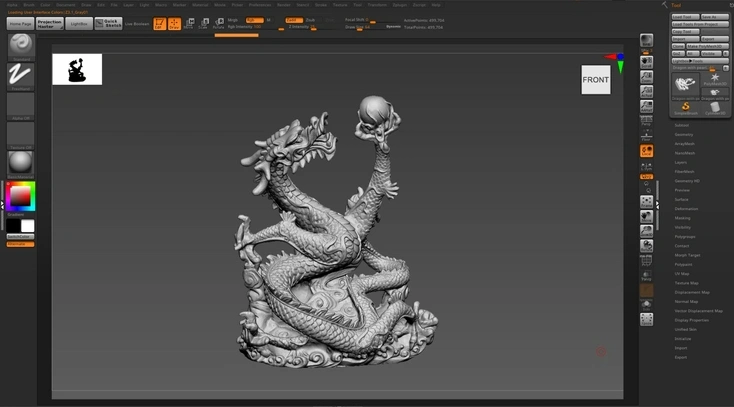Master Lighting in 3D Architecture Modeling: Tips and Tricks
by Animatics Asset Store in Blog on November 15, 2024Perfecting lighting in 3D architecture modeling is an art, a skill, perhaps even a science. With these tips and tricks, you’ll be illuminating your renders with grace and ease.
Understanding the Basics: Why Lighting Matters
Before diving into the nitty-gritty, it’s important to understand why lighting is such a crucial element. In 3D rendering, lighting can make or break your scene. It sets the mood, directs the viewer’s eye, and creates a sense of realism that can bring your architecture to life. Mastering this aspect is not just about making things visible; it’s about crafting an experience and evoking emotions that resonate with the viewer.
Lighting in 3d architecture serves as the narrative thread throughout your visual composition. By skillfully manipulating light, you guide the observer through the scene, subtly highlighting areas of importance while shrouding other aspects in shadow or muted tones. This interplay informs the narrative without the need for words, allowing designers to tell a story and inject personality into their creations.
Lighting can profoundly influence the perception of materials and textures, whether it’s the reflective surface of a modern glass facade or the rugged texture of a brick wall. Different materials react uniquely under various lighting conditions, and understanding these interactions can tremendously enhance the realism of your renderings.
Types of Lighting
- Natural Lighting: Think sunlight streaming through a window—it’s all about creating a realistic and vibrant environment. Harnessing natural light can make your structure feel alive and dynamic. Consider the time of day, the angle of light, and how these elements alter the atmosphere of a scene. Different times, from the soft hues of dawn to the dramatic contrast of midday or the golden glow of sunset, will evoke different emotions and can define the narrative of your scene.
- Artificial Lighting: From street lamps to interior lights, artificial lighting adds depth and detail. It’s about crafting an ambiance, whether warm and cozy or sleek and modern. Artificial light sources require precise control and understanding of their properties—color temperature, intensity, and directionality all play significant roles in how these lights will enhance or detract from the render.
- Ambient Lighting: This is the general illumination that fills the space, providing a foundation upon which other lighting elements build. Ambient light can ensure that no part of your render is completely in shadow unless intentionally desired. It’s like the bass line in a music composition—a foundational element that sets the stage for other lighting techniques.
Essential Tips for Lighting Perfection
Tip 1: Balance is Key
Balance is crucial. Too much natural light can wash out details; too little, and your scene may seem flat. Strike a mix that highlights crucial architectural elements while evoking the appropriate mood. Achieving this balance often requires a nuanced understanding of both lighting theory and practical application. Experimentation is your ally here; slight adjustments in intensity or angle can yield dramatically different results.
Tip 2: Use Shadows to Your Advantage
Shadows play a vital role in rendering. They add depth and texture, achieving authenticity in your visual storytelling. Carefully crafted shadows can enhance the perception of depth, adding layers to a flat screen that invite the viewer to look deeper into the scene. Additionally, shadows can serve as compositional tools to guide viewer’s eye or emphasize contrasting elements.
Tip 3: Experiment with Light Sources
Be adventurous with your light sources—it can sometimes yield the most surprising results. Consider the angle, intensity, and color of lights to discover new perspectives. Introduce variations such as warm lighting to evoke comfort in living spaces or cool, high-intensity lights to enhance the sharp lines of modern architectural designs.
Tip 4: Embrace the Power of Post-Processing
Post-processing isn’t about masking flaws; it’s about enhancing what’s already there. Fine-tuning brightness, contrast, and color saturation can elevate your render from good to great. Utilize software tools to refine and add punch to your images, perfecting proportions that might not be possible within the constraints of your initial setup.
To Learn more about 3D Architectural Rendering, Click here!
Tricks of the Trade
Trick 1: Play with HDRI Maps
High Dynamic Range Image (HDRI) maps offer a world of possibilities for authentic lighting—replicating real-world environments. Experimenting with HDRI can add an incredible layer of realism, giving your renders the perfect atmospheric touch. These maps offer a vast range of light information that affects your scene naturally, often with minimal input required beyond strategic placement.
Trick 2: Master the Art of Light Layering
Layering different types of lights can create complex, dynamic scenes. Imagine it as painting with light—each layer adds richness and detail. By layering lights, you can create nuanced effects where natural, artificial, and ambient lights play off each other, bringing out intricate details and creating a more engaging and realistic presentation.
Layered lighting allows for dynamic shifts in mood or focal points even within the same scene—a powerful tool for creators wanting to explore multiple narratives or aspects. These layers can be adjusted individually, offering precision control over the final appearance of your render.
Conclusion
With these insights, you’re well on your way to mastering lighting in 3D architecture rendering. It’s a dance between shadow and light, simplicity and complexity. So, go on—illuminate the future (or at least your latest project). Remember, the pursuit of perfect lighting is a continuous journey of learning and adaptation.
As you explore different lighting setups and techniques, your skills and intuitions will evolve, allowing you to create more emotive and impactful renderings. Have a lighting trick up your sleeve? Share it in the comments below and let’s spark a conversation! Together we can shed light on new ideas and foster a community that thrives on creativity and innovation.
Remember, while the shadows may sometimes seem daunting, they’re great companions on the journey to perfection. They highlight the brilliance of light and together, they tell stories that a single element never could.






